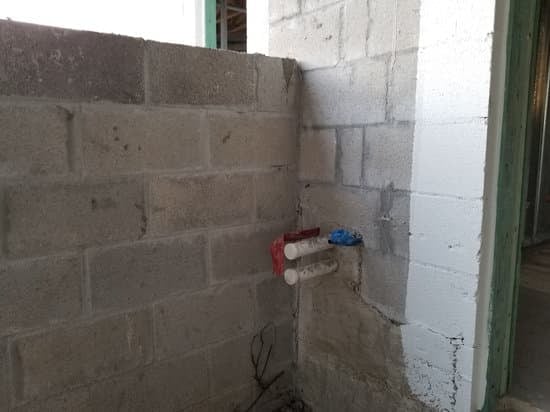What does it require for home improvement loan? Home improvement loans can provide the funding needed to upgrade and renovate your home, but understanding the requirements, types of loans available, and the application process is crucial. In this article, we will explore the necessary steps and factors involved in obtaining a home improvement loan to help you achieve your property goals.
When considering a home improvement loan, it’s important to understand the various types of loans available and their eligibility requirements. We will delve into the different options, including personal loans, home equity loans, and government-backed loans, and provide an overview of each one. Additionally, we will discuss the specific criteria that lenders often consider when determining eligibility for these loans.
Before applying for a home improvement loan, there are several factors that you should carefully consider. We will outline these considerations to help you determine if a loan is the right choice for your project. Additionally, we will provide insight into the application process and the documents typically required by lenders when applying for a home improvement loan. By understanding these key points, you can be better prepared to pursue financing for your renovation or remodel.
Types of Home Improvement Loans Available
When considering a home improvement project, one of the first things you may wonder about is what type of loan is best suited for your needs. There are several options available to homeowners looking to fund their renovation projects, each with its own set of pros and cons. Here are some of the most common types of home improvement loans:
- Home Equity Loan: This type of loan allows homeowners to borrow against the equity in their home, typically offering fixed interest rates and predictable monthly payments.
- Home Equity Line of Credit (HELOC): Similar to a home equity loan, a HELOC also allows homeowners to borrow against their home’s equity. However, it functions more like a credit card with a revolving line of credit and variable interest rates.
- Personal Loans: These unsecured loans do not require any collateral and can be used for various purposes including home improvements. They typically offer fixed interest rates and have shorter repayment terms than home equity loans.
- Cash-Out Refinance: This option involves refinancing your existing mortgage for a higher amount than what you currently owe and using the difference to fund your renovation project.
Each type of loan has its own set of requirements and considerations, so it’s important to carefully weigh your options before making a decision on which one is best for you.
Before applying for a home improvement loan, it’s essential to assess your financial situation, evaluate your renovation plans, and compare the different types of loans available. Additionally, understanding the eligibility requirements for each type of loan can help you determine which one aligns best with your circumstances.
It’s important to consider factors such as credit score, income stability, existing debt obligations, and the value of your home when exploring your options. By doing thorough research and seeking advice from financial professionals if needed, you can make an informed decision that sets you up for success in funding your home improvement project.
Ultimately, choosing the right type of home improvement loan requires careful consideration and planning. It’s vital to prioritize finding a loan that not only meets your financial needs but also aligns with your long-term goals for improving your home.
By taking into account what each type of loan requires in terms of eligibility and considering how it fits into your overall financial picture, you can make an informed decision on which option is best suited for achieving your renovation objectives.
Eligibility Requirements for Home Improvement Loans
When considering a home improvement loan, it’s important to understand the eligibility requirements that lenders typically look for. Meeting these requirements will increase your chances of being approved for a loan that can help you enhance and add value to your home.
Here are some common eligibility requirements for home improvement loans:
1. Credit Score: Lenders will often look at your credit score to determine your creditworthiness. A higher credit score can result in more favorable loan terms and lower interest rates.
2. Income: Lenders will want to ensure that you have a steady income to make the monthly loan payments. This can be done by providing pay stubs, W-2 forms, or tax returns.
3. Equity: Having equity in your home can increase your chances of being approved for a home improvement loan. Equity is the difference between the value of your home and the amount you owe on it.
4. Debt-to-Income Ratio: Lenders will also consider your debt-to-income ratio, which compares your monthly debt payments to your gross monthly income. A lower ratio indicates that you have more disposable income available for loan payments.
Meeting these eligibility requirements can significantly increase your chances of getting approved for a home improvement loan that suits your needs. It is essential to review these points when considering what does it require for home improvement loan to ensure you meet the outlined criteria before applying.
Remember, each lender may have different eligibility requirements, so it’s important to research and compare various lenders to find one that best fits your financial situation and goals for home improvements.
Factors to Consider Before Applying for a Home Improvement Loan
When considering a home improvement loan, there are several factors that you should take into account before making a decision. It’s important to understand the different aspects of these loans and how they can impact your financial situation. In this section, we’ll delve into the key factors you need to consider before applying for a home improvement loan.
Current Financial Situation
Before applying for a home improvement loan, it’s crucial to assess your current financial situation. Take a look at your income, expenses, savings, and any existing debts. Understanding your financial standing will help you determine how much you can afford to borrow and repay.
Projected Costs of the Home Improvement Project
Another essential factor to consider is the projected costs of your home improvement project. Whether you’re remodeling your kitchen, adding an additional room, or making energy-efficient upgrades, it’s important to have a clear understanding of the estimated expenses. This will help you determine the amount of funding needed from the home improvement loan.
Expected Return on Investment
Consider the potential return on investment (ROI) for your home improvement project. Some renovations and upgrades can increase the value of your home, while others may not provide a significant ROI. Evaluating the expected ROI will allow you to make informed decisions about which projects are worth financing with a loan.
By carefully analyzing these factors, you can make a well-informed decision about whether a home improvement loan is right for you and how it can contribute to achieving your renovation goals. Understanding these considerations is crucial for ensuring that you choose the most suitable financing option and manage it responsibly throughout the renovation process.
The Application Process for a Home Improvement Loan
When you are ready to pursue a home improvement project, you may be considering taking out a loan to cover the costs. The application process for a home improvement loan is typically straightforward but requires careful consideration and preparation. Before starting the process, it is important to understand what it requires for home improvement loans.
The first step in the application process for a home improvement loan is to research and compare different lenders and loan options. This will help you understand the terms, interest rates, and repayment options available to you. Once you have chosen a lender and loan that best suits your needs, you can begin the application process.
To apply for a home improvement loan, you will need to provide personal and financial information, including your income, credit history, employment details, and any existing debts or liabilities. Lenders use this information to assess your eligibility and calculate the amount of money they are willing to lend you for your home improvement project.
After submitting your application, the lender will review your information and conduct a credit check. If approved, they will provide you with the terms of the loan, including the interest rate and monthly payments. It is important to carefully review these terms before accepting the loan offer.
Knowing what does it require for home improvement loans will help guide you through the application process and increase your chances of securing funding for your home improvement project. By being prepared with all necessary documents and understanding the criteria that lenders consider when evaluating applicants, you can navigate through the application process with confidence.
Documents Needed for a Home Improvement Loan
When applying for a home improvement loan, there are several documents that you will need to gather in order to complete the application process. The specific requirements may vary depending on the lender and the type of loan you are applying for, but there are some common documents that are typically needed.
First and foremost, you will need to provide proof of income. This could include pay stubs, W-2 forms, or tax returns. Lenders use this information to assess your ability to repay the loan. You may also be required to provide proof of employment and length of employment.
In addition to proof of income, you will also need to provide documentation related to the property you are looking to improve. This could include property tax statements, homeowners insurance information, and recent appraisals or assessments. Lenders will want to ensure that the property has sufficient value to serve as collateral for the loan.
Finally, you will likely need to provide personal identification, such as a driver’s license or passport, as well as information about any existing debts or financial obligations. It’s important to gather all of these documents ahead of time and have them organized and ready when you apply for a home improvement loan.
By having all necessary documentation prepared in advance, you can streamline the application process and increase your chances of securing a home improvement loan that meets your needs.
How to Choose the Right Lender for Your Home Improvement Loan
When it comes to choosing the right lender for your home improvement loan, there are a few important factors to consider. Finding the best lender can make a significant impact on the overall success of your home improvement project and the financial burden it may place on you in the long run.
Research Different Lenders
One of the first steps in choosing the right lender for your home improvement loan is to research different lenders. Look for lenders who specialize in home improvement loans and have a strong track record of helping homeowners fund their renovation projects. It’s also essential to compare interest rates, repayment terms, and any additional fees associated with each lender.
Check Lender Reputation
Another crucial step is to check the reputation of potential lenders. This can be done by reading online reviews, checking with the Better Business Bureau, and asking for referrals from friends or family members who have used similar services. A reputable lender will have positive feedback from past clients and transparent lending practices.
Consider Customer Service
Customer service is also an important factor when choosing a lender for your home improvement loan. You want to work with a lender that is responsive, communicative, and supportive throughout the entire loan process. Consider reaching out to potential lenders with questions about their services to gauge their level of customer care.
By carefully considering these factors when choosing a lender for your home improvement loan, you can ensure that you are getting the best possible financing option for your renovation project. With the right lender supporting you, you can feel confident in taking on your home improvement goals without unnecessary financial stress or headache.
Tips for Successfully Managing a Home Improvement Loan
Managing a home improvement loan requires careful planning and budgeting to ensure that the funds are used effectively to enhance your property. The first step in managing a home improvement loan is to create a detailed plan of the renovations or repairs that you intend to undertake. This will help you determine the estimated costs and prioritize the most essential upgrades for your home.
Another important aspect of managing a home improvement loan is to stay within your budget and avoid overspending. It’s crucial to carefully monitor your expenses throughout the renovation process to ensure that you don’t exhaust your loan funds prematurely. Setting a budget for each specific project or area of renovation can help you keep track of your spending and prevent any financial setbacks.
Furthermore, successful management of a home improvement loan involves regular communication with your contractor or service provider. It’s important to maintain open and clear communication regarding the progress of the projects, as well as any unexpected changes or additional costs that may arise. By staying informed and involved in the renovation process, you can ensure that the loan funds are utilized effectively and that any issues are addressed promptly.
Common Mistakes to Avoid When Applying for a Home Improvement Loan
When seeking a home improvement loan, it’s important to be aware of common mistakes that many borrowers make. Avoiding these pitfalls can help you secure the right loan for your needs and ensure a smooth borrowing process.
One common mistake to avoid when applying for a home improvement loan is not thoroughly researching and comparing different lenders. Each lender offers different terms, interest rates, and fees, so it’s crucial to shop around and find the best possible deal. Additionally, failing to consider your credit score and financial situation before applying for a loan can lead to disappointment. It’s essential to have a clear understanding of where you stand financially before approaching lenders.
Another mistake to steer clear of is borrowing more than you can afford. While it may be tempting to take out a larger loan to fund additional renovations or upgrades, overextending yourself financially can lead to difficulty making payments down the line. Carefully assess your budget and the costs of your home improvement project before settling on a loan amount.
A further oversight to avoid is not reading the fine print of the loan agreement. Understanding the terms and conditions of the loan, including interest rates, repayment schedules, and any potential penalties, is crucial in making an informed decision. Skipping this step could result in unexpected expenses or unfavorable borrowing terms.
| Mistake | Consequence |
|---|---|
| Not comparing lenders | Miss out on better terms or lower interest rates |
| Borrowing more than you can afford | Financial strain and difficulty making payments |
| Not reading the fine print | Unexpected expenses or unfavorable borrowing terms |
Conclusion
In conclusion, securing a home improvement loan requires careful consideration of various factors. From understanding the different types of loans available to knowing the eligibility requirements and application process, it is important to be well-informed before embarking on this financial endeavor. It is essential to assess your financial situation and consider factors such as interest rates, repayment terms, and potential collateral needed for the loan.
Choosing the right lender is crucial in ensuring that you get the best deal for your home improvement loan. Researching and comparing different lenders will help you find one that offers favorable terms and conditions. Additionally, managing your home improvement loan successfully entails creating a realistic budget for the improvements, sticking to the plan, and making timely payments.
By avoiding common mistakes and staying informed throughout the process, you can make your home improvement goals a reality with the right loan. Remember to gather all necessary documents, carefully consider your options, and work with a reputable lender. With thorough preparation and prudent decision-making, you can achieve your desired home improvements while effectively managing your loan.
Frequently Asked Questions
Is It Hard to Get Approved for a Home Improvement Loan?
Getting approved for a home improvement loan can vary depending on the lender and your financial situation. Factors such as credit score, income, and the amount of equity in your home can all play a role in the approval process.
What Is the Minimum Credit Score for a Home Improvement Loan?
The minimum credit score required for a home improvement loan also varies by lender. Generally, a FICO score of 620 or higher is considered acceptable for most lenders offering these types of loans.
What Is the Difference Between a Home Loan and a Home Improvement Loan?
The main difference between a home loan and a home improvement loan lies in their intended use. A home loan, or mortgage, is used to purchase a new home or refinance an existing one, while a home improvement loan is specifically designed to fund renovations or repairs on an existing property.
Additionally, the terms and interest rates for these loans may differ based on their specific purposes.

I’m thrilled to have you here as a part of the Remodeling Top community. This is where my journey as an architect and remodeling enthusiast intersects with your passion for transforming houses into dream homes.





